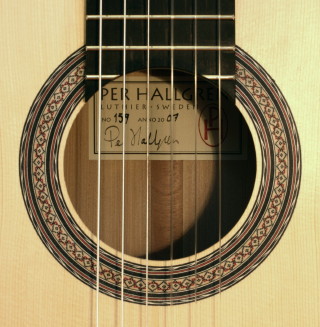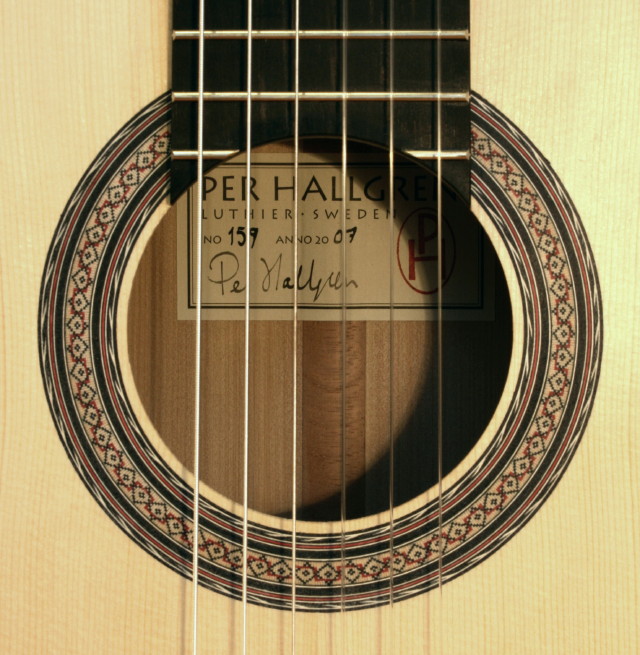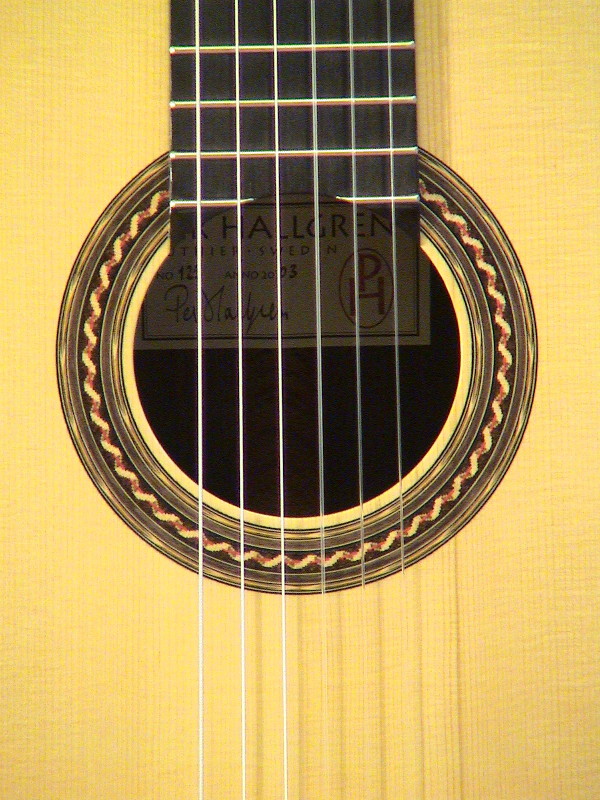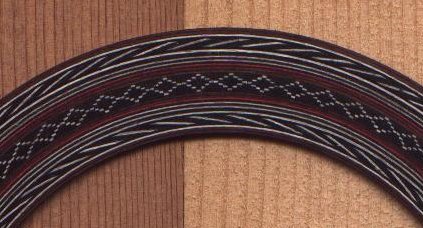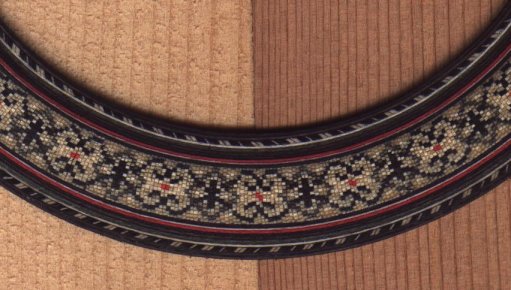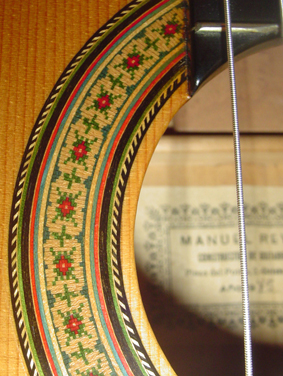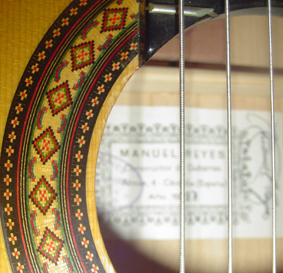|
a_arnold -> RE: A traditional rosette design (Mar. 9 2007 22:44:13)
|
That's beautiful, Per. I just took a closer look at the rosettes on my guitars, and realized that there is quite a difference. I one (a high-end Paracho maker), the tiles are about 1mm and aren't quite square; yours are all square and significantly less than 1mm -- more like my older Spanish guitars from the 60's and 70's.
Question: there must a limit to how wide a rosette can be before it begins to interfere with the tonal quality of the soundboard. I really love the detail in a fine rosette, and would like to make a wider one, but don't want to affect the sound. Any thoughts? Maybe, since it is between two relatively heavy transverse struts anyway, it has little effect on the sound...?
I suppose that the assembled larger pieces of the mosaic (I think they're called logs?) also have to be tapered slightly to fit together so they cover the circle, and the wider the rosette, the more obvious that taper becomes, which makes the taper more difficult to handle without compromising the design. Or is this not a problem in a wider rosette?
Anyway -- beautiful job. It must be very satisfying to make the whole thing -- even the rosette. I wonder if any luthier goes so far as to make their own machines?
|
|
|
|
